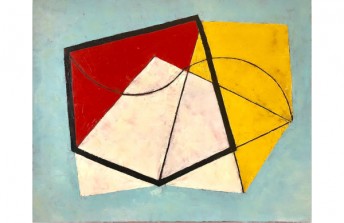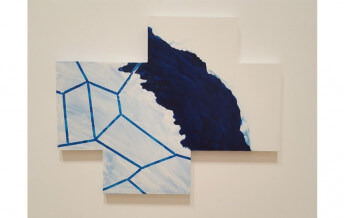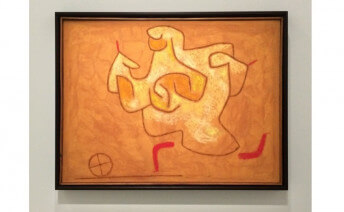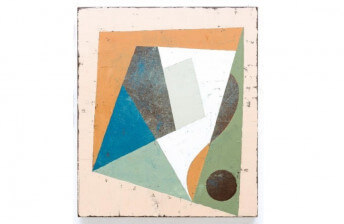IdeelArt at the Royal Academy Summer Exhibition 2016
Jul 14, 2016
On IdeelArt’s recent visit to the Royal Academy of Art Summer Exhibition we felt that we had entered an aesthetic whirlwind: throngs of viewers encountering 1000+ works of art exhibited controlled-chaos salon style throughout London’s Burlington House. The largest open exhibition in the world, the Royal Academy Summer Exhibition invites annual submissions from any artist in the world, trained or untrained, known or unknown. Many of the most famous living artists regularly participate, including members of the Royal Academy themselves, whose works are exhibited alongside the other accepted submissions. We found the selection of abstract art and artists in this year’s Summer Exhibition to be tremendously vibrant, interesting and diverse.
Royal Academy Summer Exhibition Welcomes Art Teams
One of the primary goals of the Royal Academy when it was founded in 1768 was to host an open, public exhibition featuring the work of all artists of merit. The Academy’s first such exhibition was held in 1769 and there’s been one every year since. In addition to accepting submissions from individual artists, each year the Academicians are asked to personally invite artists to submit work. This year, the most talked-about change is that the exhibition’s coordinator, sculptor Richard Wilson, used his privilege to invite submissions from artistic duos who make work together.
Wilson took this step in order to bring attention to the fact that the Royal Academy has a policy against admitting artistic teams into its ranks. In our opinion, the work submitted by the duos this year was without question equal in its merit to the other work in the show, and we agree that it demonstrates that this rather arbitrary limitation is probably in need of reconsideration. In particular, we enjoyed And So It Begins, a limited edition “potato print” from the artistic team Andrzei Orlowski and Amelie Orlowska.
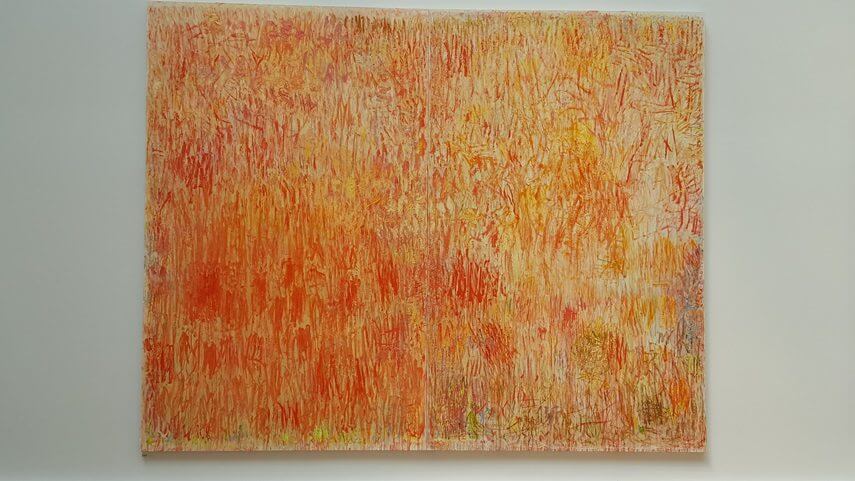
Christopher Le Brun (RA) - Golden Grove
Established Artists at the Show
As always, the biggest thrill for us while visiting the RA Summer Exhibition is to see the work of amateur and unknown artists exhibited side-by-side with that of famous, established names. Representing those considered to be the most well-known artists this year was a particularly impressive selection of contemporary abstract sculptors. We were moved by Anish Kapoor’s untitled marble sculpture, which captured a powerful essence of antiquity, modernity, organic form and mechanical process colliding.
We were also touched by the elegant, personal nature of the duck-egg blue metal sculpture Saima Kivi by Ekkehard Altenburger. The intricacy and delicacy of the form was in lovely conversation with many of the other sculptural forms in the show. It also conversed beautifully with a print titled Orange Column by the Royal Academy member David Nash. Nash normally works with felled wood, creating monumental sculptural works that directly interact with natural materials and forms. This print, as with Altenburger’s and Kapoor’s work, spoke to an undercurrent of organic concerns intermingling with the resurgence of formalist experimentation we noticed throughout this year’s exhibition.
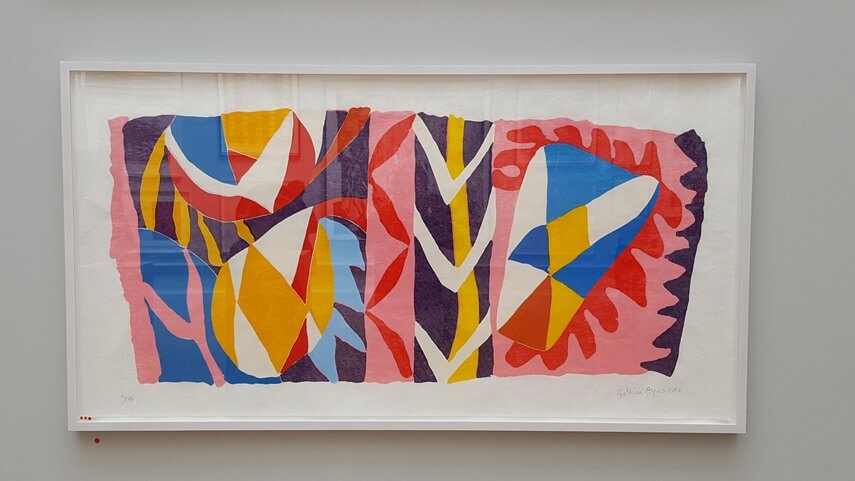
Gillian Ayres (RA) - Achiote
Modern Formalism
Several works by the Royal Academician John Carter spoke to the continued influence of formal concerns in contemporary abstract art. Carter’s Constructivist and Minimalist inspired works beautifully explore form, line, surface and materiality, as well as the intersection of two and three-dimensionality. Carter’s evocative statement was brilliantly made in the pieces Two Identical Shapes: Central Slot II and Identical Shapes in Eight Orientations. These works play with the eye, showing identical forms arranged on a variety of different planes and in varying configurations. Their formal examination of how the eye confronts relativity in form is reminiscent of Josef Alber’s work with color.
Royal Academician Paul Huxley presented a multi-disciplinary examination of geometric abstraction. His paintings A Square and a Circle 4 and Three Ellipses 2 offer a refreshingly contemporary study of shape, color, surface and paint. His sculptural piece Beta sprung to life with vitality, adding to his abstract language a sense of playfulness, confidence and analytical curiosity.
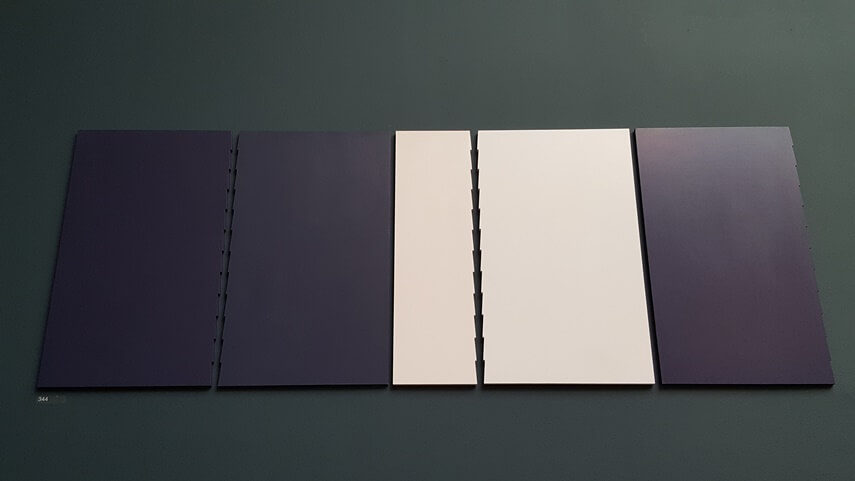
Tess Jaray (RA) - Aleppo 3
An Aesthetic of Decay
Much of the abstraction in this year’s exhibition spoke to the widespread contemporary examination of decay, utilizing a language informed by reductionism and urban primitivism. Minto by Stewart Geddes captures this point where decay and reduction intersects with a more formal abstract geometric language, resulting in a particularly relevant contemporary statement. Sandra Beccarelli’s oil on linen painting Constrained Desire also beautifully expresses what we see as the current conversation between primitive expressionistic abandon and minimalist precision.
The influence of Arte Povera is clear in works such as Avocado Coconut Egg by the Royal Academician El Anatsui, and Threw It Through It by Des Hughes. But the methodical care and consideration given to these objects commands a different respect than would be given so-called anti-art. These pieces convey an earnest appreciation for materials, process and form, along with their respect for the aesthetic legacy of their predecessors. We were struck by the high level of technique and integrity with which they were made.
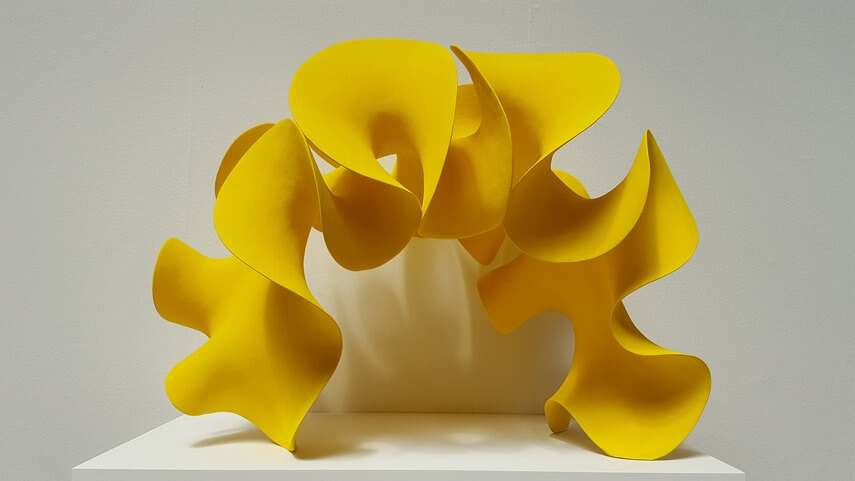
Merete Rasmussen - Yellow Form
Other Works of Interest
Several abstract works and artists simply inspired us to experience pure joy. Royal Academician Tess Jaray’s work was elegant and refined and communicated on a lively, visceral, formal-yet playful abstract plane. Rebecca Salter, also of the Royal Academy, wowed us with Tessela 1 and 2, capturing a deep inner sensation of the meeting of natural forces, process, materiality and the sublime.
OM Halo II by the always impressive Oliver Marsden stuck in our minds long after the show. It’s simplicity and beauty lived up to its namesake, truth. And one of our favorite images of the exhibition was the painting Joy Ride, by the Royal Academician Humphrey Ocean. Ocean’s work isn’t normally abstract, nor is this piece perhaps intended to be read as abstraction. But the emotion conveyed in its grey color field interacts so warmly with the ambiguity of the forms inhabiting the image that our response was far more internal and meditative than objective.
If you’ve not yet visited this year’s exhibition, we highly recommend it. There’s much to enjoy, and hundreds of worthy artists we simply haven’t got room to mention. The Royal Academy of Art Summer Exhibition 2016 is on view through 21 August 2016.
Featured Image: Jennifer Durrant (RA) - From a series-Ghirlanda III-Idea for a Tapestry
All photos by IdeelArt

